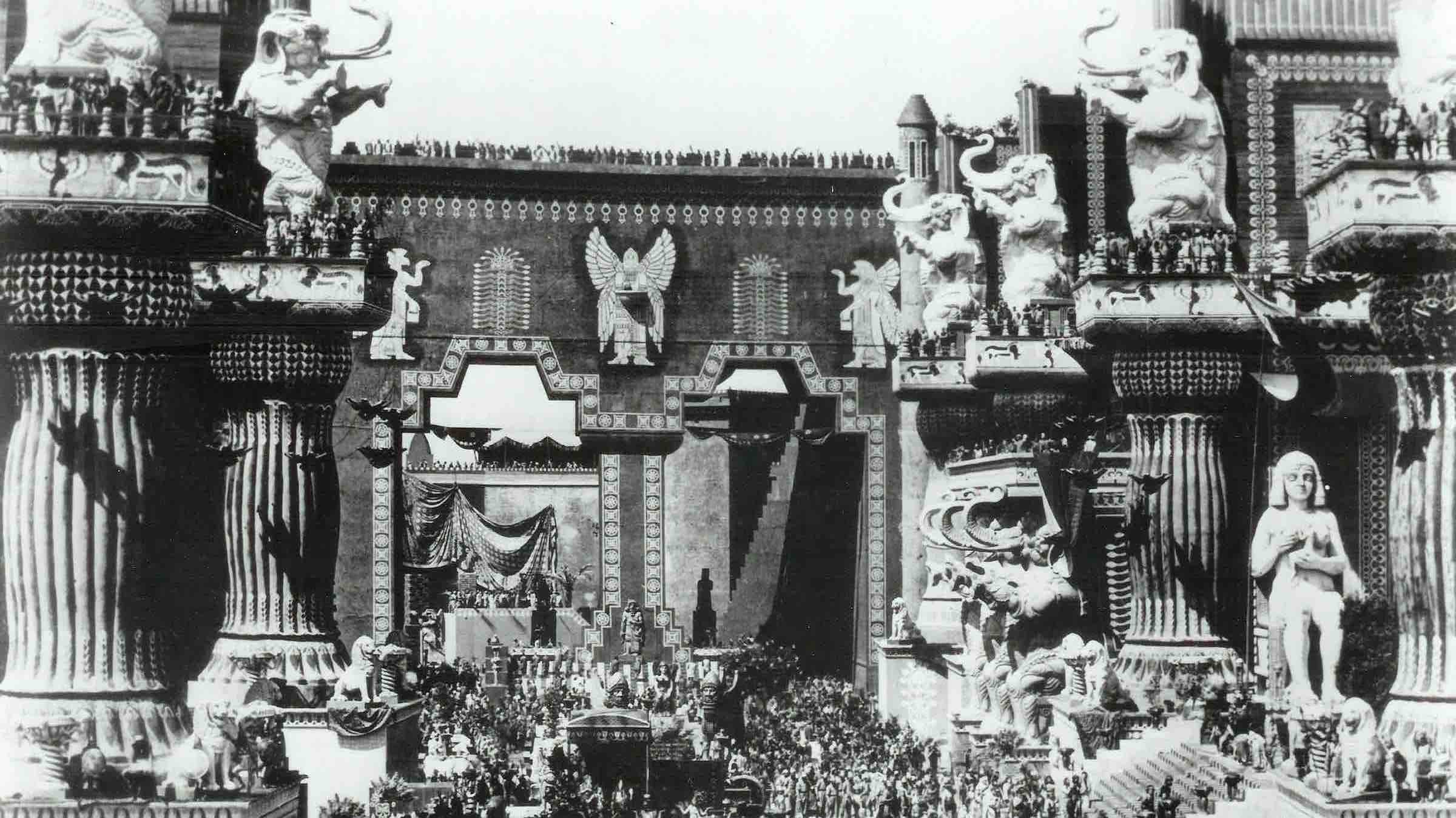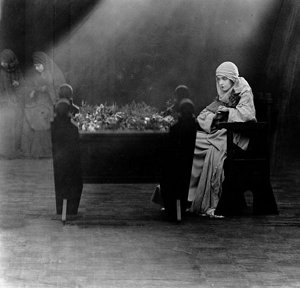Film history is such a big piece of this AFI list as we’re not only looking at movies that movie well but ones that taught all other movies how to movie. Back when filmmakers were still trying to figure out what full-length films were going to be, we had some that set the stage for everything else to come.
Movies, like other artforms, ideally have the flexibility to change, but specifically change us in a largely visual medium. And yeah, they had text, and man does this movie have a lot of text, but the term “moving pictures” meant a lot back when people were still getting used to the idea that pictures could move.
They didn’t have to be art, they didn’t have to be profound, they didn’t have to have the ability to tell multiple stories at once and link them together, they just had to be visually captivating–but this one, the oldest movie on the list–manages to do all of the above.
We’re talking about 1916’s Intolerance, written and directed by D.W. Griffith.
Usually, this is where I point out the main message of the movie, since having that strong thesis is such a huge component of all the best movies. But since this movie came while they were still figuring things out, I would give it a pass for not having a strong central message.
But, of course, that’s not the case. In fact, it has a very strong message: humanity’s cruelty has spread across all time periods.
Throughout the movie, we get to see humanity acting cruel in many scenarios, from the fall of Babylonia, to the crucifixion of Jesus, to the extinction of the Huguenots and the murder of an innocent man on death row. We look at humans acting awful and succumbing to hate and mob mentality over and over again through vastly different time periods, ranging from the BCs to now (well, if you consider now to be 1916).
With this, the movie isn’t only cohesive, but it’s putting a spin on it that we could take into any time period, including now (I mean 2024): we can all be the best humans we can be.
I didn’t expect to take such a strong universal theme from this film, but here we are.
And wow, does this film do the epic thing well. Not only is it epic in scope, but it is in set design, effects and editing.
It’s funny how modern this feels at times, the different storylines intersecting with each other. This is something that seems like a given in any modern action movie, but it can be traced back here.
Often there are things happening in parallel, and this concludes with all four storylines reaching an epic climax at the same time.
This movie is ambitious in all possible ways, and I think this is something that gets lost in today’s films. Maybe it just had the luxury of having almost no movies before it, but it goes all out in what it’s trying to do: pushing imagination and ideas. This leaves movies today, who all have way more resources, with few excuses to not do the same.
Ambition is definitely not a dirty word, and I really don’t think it’s possible to watch this movie, knowing its historical context and how most of this was invented on the spot, and not fall a bit deeper in love with the idea of what can be done with ideas, storylines, and moving pictures.
And of course, the Babylon-sized elephant in the room was this film was made by D.W. Griffith, who is infamously known for his film a couple years earlier, The Birth of a Nation. This movie, while being also impressive and having the first ever epic Hollywood movie, is even more famous for being super racist.
It glorifies the KKK (being attributed to the rebirth of this hate group) and it also presents black people in a cruel light.
Some people, for this reason, think Griffith doesn’t belong anywhere on this list.
It is, however, interesting to look at the message of Intolerance with this in mind.
The message talks about the dangers of demonization and hate. It encourages humanity to be better. All of this coming two years after Griffith’s earlier film caused public accusations of racism against the filmmaker.
Now, maybe this is too sunny of a take, but as films can be instructional for an audience, they can also be therapeutic for the one creating them. Maybe a little piece of Griffith was facing his own intolerance when making this, and he was at least partly saying that he can do better too.
If we look at the pieces of ourselves that might destroy Babylon or condemn an innocent man to die and rise above it, we’re doing something good.
And it is pretty badass that a film this ancient could inspire that.
Thanks for reading! Big news coming very soon!




